Bulkhead seats are a popular choice among air travelers who want to enjoy a little extra legroom and comfort during their flight. These seats are located at the front of each cabin section, directly behind a divider or bulkhead, and are often considered prime real estate due to their spaciousness and proximity to the cabin crew. While bulkhead seats can be a great option for many passengers, they also come with their own set of advantages and disadvantages that should be carefully considered before booking.
Understanding Bulkhead Seats
Bulkhead seats are typically located at the front of each cabin section, directly behind a divider or bulkhead. They are often considered prime real estate due to their spaciousness and proximity to the cabin crew. These seats are also generally located near the lavatories and galley, which can be a convenience or a drawback depending on the passenger’s needs.
Airlines and Bulkhead Seats
Most airlines offer bulkhead seats as an option for passengers who want to enjoy a little extra legroom and comfort during their flight. However, the availability of these seats can vary depending on the airline, the aircraft type, and the route. Some airlines charge extra fees for bulkhead seats, while others offer them as a complimentary upgrade for elite frequent flyers or passengers with special needs.
Understanding Bulkhead Seats
Bulkhead seats are the seats located behind a physical wall separating different sections of the plane. These seats are often considered premium seating because they offer more legroom and space for passengers to stretch out.
The bulkhead seats are often located at the front of the plane, and they are usually reserved for passengers with disabilities, families with infants, or passengers who have paid extra for the privilege of sitting there.
One of the main advantages of bulkhead seating is the extra legroom. Since there is no seat in front of the bulkhead seat, passengers have more space to stretch out their legs. This can be especially important for taller passengers who may find regular seats uncomfortable.
Another benefit of bulkhead seating is that it is often quieter than other parts of the plane. This is because there are no seats in front of the bulkhead, which means that there are fewer people moving around and making noise.
However, there are also some drawbacks to bulkhead seating. For example, passengers in these seats may not have access to under-seat storage, which means that they will need to store their carry-on luggage in the overhead compartments. Additionally, some bulkhead seats may have limited recline, which can make it difficult to get comfortable during a long flight.
Overall, bulkhead seats can offer a more comfortable flying experience for passengers who are willing to pay extra for the privilege. However, it is important to weigh the pros and cons before choosing to sit in one of these seats.
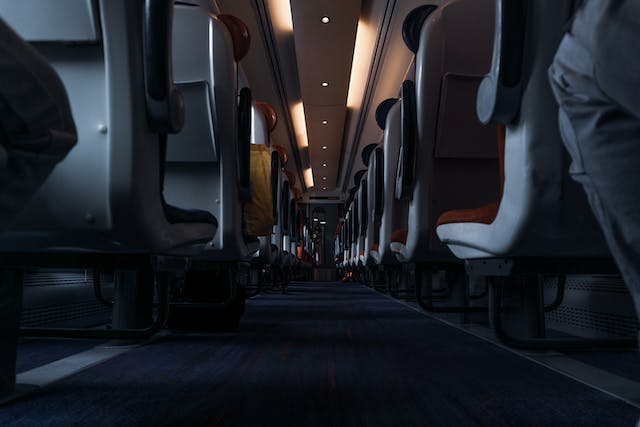
Airlines and Bulkhead Seats
Bulkhead seats are highly sought after by many airline passengers. These seats are located at the front of the cabin, directly behind the bulkhead wall, which separates the cabin from the cockpit and/or galley area. They offer additional legroom and space, making them a popular choice for many travelers.
Many airlines offer bulkhead seats on their flights. United Airlines, for example, offers bulkhead seats on their Airbus A319-100, Airbus A320-200, Boeing 737-700, Boeing 737-800, Boeing 737-900, Boeing 737 MAX 8, Boeing 737 MAX 9, Boeing 757-200, Boeing 757-300, Boeing 767-300ER, Boeing 767-400ER, Boeing 777-200, Boeing 777-200ER, Boeing 777-300ER, Boeing 787-8, and Boeing 787-9 aircraft.
Other airlines, such as Delta and American Airlines, also offer bulkhead seats on select aircraft in their fleet. The type of aircraft and the number of bulkhead seats available may vary depending on the airline.
It is important to note that while bulkhead seats offer additional legroom and space, they may not always be the best option for all passengers. Some bulkhead seats do not have under-seat storage, which can be inconvenient for travelers who need to access their belongings during the flight. Additionally, bulkhead seats may be located near the lavatories or galley area, which can result in increased noise and foot traffic.
Overall, bulkhead seats are a popular choice for many airline passengers, and many airlines offer them on select aircraft in their fleet.
Bulkhead Seat Layouts
Bulkhead seats are highly sought after by travelers for their added legroom and proximity to the front of the aircraft. These seats are located behind a physical barrier, separating them from the rest of the cabin. They are often found in first class, business class, and premium economy, but can also be available in coach.
The layout of bulkhead seats can vary depending on the airline and class of service. In first class and business class, bulkhead seats are typically individual suites with a door for added privacy. In premium economy and coach, bulkhead seats are often arranged in a 2-3-2 or 3-3-3 configuration.
For example, in United Airlines’ Polaris business class, the bulkhead seats are individual suites with a door for added privacy. These seats are arranged in a 1-2-1 configuration, with the seat and footrest converting into a fully flat bed. In contrast, in United Airlines’ economy class, the bulkhead seats are arranged in a 3-3-3 configuration, with extra legroom due to the lack of seats in front of them.
When selecting a bulkhead seat, it’s important to note that some seats may have restricted legroom due to the placement of the bulkhead wall or the location of the lavatory. It’s also important to note that some bulkhead seats may not have under-seat storage due to the placement of the entertainment system or other equipment.
Overall, bulkhead seats can provide added comfort for travelers, but it’s important to research the specific layout and restrictions of these seats before selecting them.
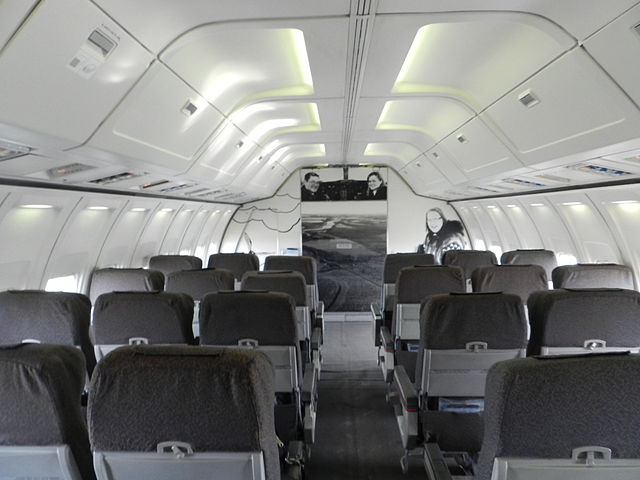
Pros and Cons of Bulkhead Seats
Bulkhead seats are often coveted by travelers for their extra legroom and other perks. However, there are also some drawbacks to these seats that travelers should be aware of before choosing them. Here are some pros and cons of bulkhead seats:
Pros
- Extra legroom: Bulkhead seats are located at the front of the cabin, which means that there is no seat in front of them. This provides extra legroom for the passenger, which can be especially beneficial on long flights.
- More space: The lack of a seat in front also means that there is more space for the passenger to stretch out and move around.
- Priority boarding: Many airlines offer priority boarding to passengers seated in bulkhead seats, which can be a time-saver.
- No reclining seats in front: Since there is no seat in front, there is no possibility of having the seat in front recline into the passenger’s space.
Cons
- Limited legroom during takeoff and landing: While bulkhead seats offer extra legroom during the flight, passengers may find that they have limited legroom during takeoff and landing due to the proximity of the bulkhead wall.
- Limited storage space: Bulkhead seats often have limited storage space since there is no seat in front to store items under.
- Noise and disturbance: Passengers seated in bulkhead seats may experience more noise and disturbance from the galley and lavatories located nearby.
- Limited privacy: Since bulkhead seats are located at the front of the cabin, passengers may feel that they have less privacy than those seated further back.
Overall, bulkhead seats can be a good choice for passengers who value extra legroom and space. However, they do come with some drawbacks that travelers should consider before selecting them.
Bulkhead Seats and In-Flight Amenities
Bulkhead seats are the first row of seats in an aircraft cabin, typically located behind a physical barrier such as a wall or curtain. These seats are highly sought after by many passengers due to their additional legroom. However, there are other in-flight amenities that come with bulkhead seats that are worth considering.
One of the main benefits of bulkhead seats is the extra storage space. As there is no seat in front of the passenger, there is usually a larger tray table that folds down from the armrest. This provides ample space for laptops, books, and other personal items. Additionally, there is often more overhead compartment space available for carry-on luggage, as well as under-seat storage.
Another advantage of bulkhead seats is the potential for better in-flight entertainment. Some airlines have installed larger display screens in the bulkhead seats, which can provide a better viewing experience. Additionally, the galley is often located in front of the bulkhead seats, which can mean quicker access to food and drinks.
However, it is important to note that not all bulkhead seats are created equal. Some bulkhead seats may have limited legroom due to the presence of an entertainment box or other equipment. Additionally, some bulkhead seats may not recline fully, which can be uncomfortable for longer flights.
Overall, bulkhead seats can provide a more comfortable and convenient flying experience for many passengers. However, it is important to weigh the pros and cons of each specific seat before making a decision.
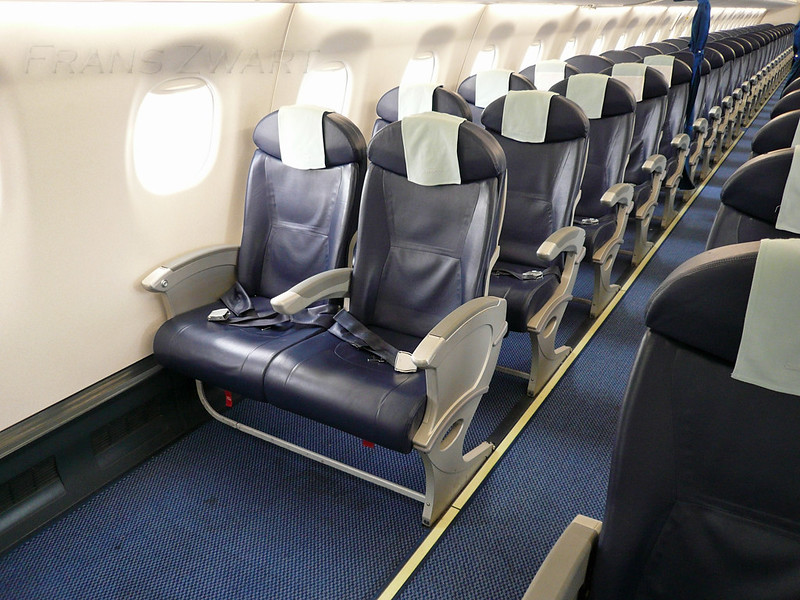
Boarding and Deplaning with Bulkhead Seats
Bulkhead seats are located at the front of the plane, behind the cockpit and in front of the first row of seats. These seats offer more legroom and are often preferred by passengers who are tall or have mobility issues. However, boarding and deplaning with bulkhead seats can be different from other seats on the plane.
When boarding, passengers with bulkhead seats typically have priority boarding. This allows them to board the plane before other passengers and get settled into their seats before the rush. However, it is important to note that priority boarding may vary depending on the airline and the type of ticket purchased.
Deplaning with bulkhead seats can also be different. Passengers with bulkhead seats are usually the first to exit the plane, as they are located at the front of the plane. This can be an advantage for those who need to make a tight connection or want to get off the plane quickly.
It is important to note that not all bulkhead seats are created equal. Some bulkhead seats may have limited recline or may not have under-seat storage. It is best to research the specific airline and aircraft to determine the best bulkhead seat for your needs.
In summary, boarding and deplaning with bulkhead seats can offer advantages for passengers, including priority boarding and quick exit from the plane. However, it is important to research the specific airline and aircraft to determine the best bulkhead seat for your needs.
Pricing and Fees for Bulkhead Seats
Bulkhead seats are highly sought after by many travelers due to the extra legroom they provide. However, they often come with a higher price tag than regular seats. The pricing for bulkhead seats can vary depending on the airline, route, and demand.
Some airlines charge a flat fee for bulkhead seats, while others may charge a percentage of the ticket price. The fees for bulkhead seats can range from $20 to $200 or more per flight segment. It is important to note that these fees are in addition to the cost of the ticket itself.
Some airlines offer publicly available offers for upgrading to bulkhead seats, while others may only offer them to frequent flyers or those with certain credit cards. It is important to check with the airline to see what options are available and what the requirements are.
It is also worth noting that some airlines may offer bulkhead seats as part of a package deal or upgrade offer, which may include other perks such as priority boarding or extra baggage allowance.
While bulkhead seats can be expensive, they can also be a worthwhile investment for those who value the extra legroom and comfort. It is important to weigh the cost against the benefits and determine if it is worth it for each individual traveler.
Overall, the pricing and fees for bulkhead seats can vary greatly depending on the airline and route. It is important to research and compare options to find the best deal. Additionally, it is important to be aware of any affiliate commission or other incentives that may be involved in the sale of bulkhead seats.
Bulkhead Seats during Long-Haul Flights
Bulkhead seats are highly sought after by passengers who want extra legroom during long-haul flights. These seats are located in the first row of a cabin section, and are separated from the rest of the seats by a physical barrier known as a bulkhead.
Passengers who choose these seats can enjoy a more comfortable flight due to the extra space available. However, it is important to note that bulkhead seats come with their own set of drawbacks. For example, passengers in these seats may not have access to an under-seat storage area, which means that they will have to keep all of their belongings in the overhead bins.
Another disadvantage of bulkhead seats is that they may not recline as much as other seats, which can be uncomfortable during a long flight. Additionally, passengers seated in bulkhead seats may be more susceptible to noise and disturbances from the galley area or lavatories due to their proximity to these areas.
Despite these drawbacks, bulkhead seats are still a popular choice for many passengers on long-haul and international flights. Airlines often charge extra for these seats, so passengers should weigh the benefits and drawbacks carefully before making a decision.
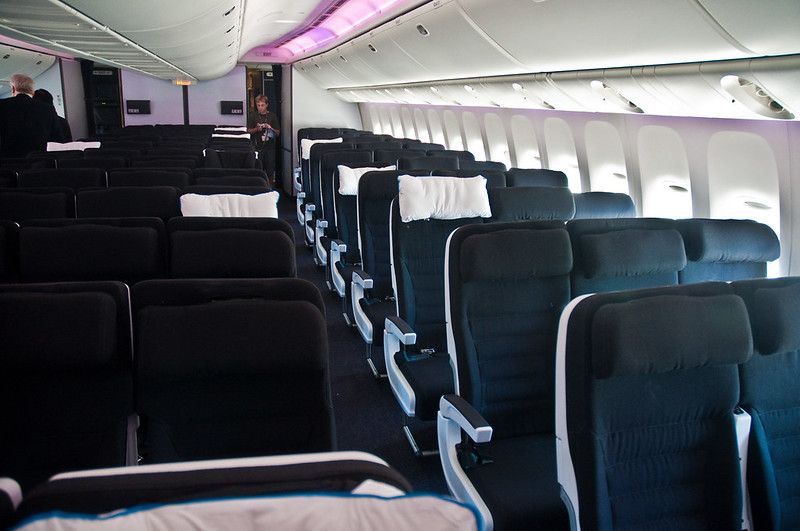
Bulkhead Seats and Travel Destinations
Bulkhead seats are a popular choice for many travelers, especially those who are looking for extra legroom and more space to stretch out during long flights. These seats are located in the front row of the cabin, and they offer a variety of benefits that can make your travel experience more comfortable and enjoyable.
If you are planning a trip to Mexico or Chicago, you may want to consider booking a bulkhead seat for your flight. These destinations are popular among travelers, and the extra space and comfort of a bulkhead seat can make all the difference during a long flight.
In Mexico, many travelers choose to visit popular destinations like Cancun, Puerto Vallarta, and Cabo San Lucas. These destinations offer beautiful beaches, vibrant nightlife, and a variety of cultural attractions. If you are planning a trip to Mexico, a bulkhead seat can help you arrive at your destination feeling refreshed and relaxed.
Chicago is another popular destination for travelers. This city is known for its stunning architecture, world-class museums, and delicious food. Whether you are visiting Chicago for business or pleasure, a bulkhead seat can help you arrive at your destination feeling ready to explore everything this city has to offer.
Overall, if you are looking for a way to make your next flight more comfortable and enjoyable, a bulkhead seat may be the perfect choice for you. With extra legroom and more space to stretch out, you can arrive at your destination feeling refreshed and ready to explore all that your destination has to offer.
Bulkhead Seats and Airline Programs
Bulkhead seats are highly sought after by many airline passengers. These seats are located in the first row of a cabin and offer additional legroom due to the absence of seats in front. However, not all airlines offer bulkhead seats as part of their standard seating arrangements.
For passengers who frequently travel on a particular airline, there may be opportunities to access bulkhead seats through airline programs. These programs can include loyalty programs, status tiers, and other benefits that can provide access to preferred seating arrangements.
For example, frequent flyers who achieve elite status with an airline may be granted access to bulkhead seats as a perk of their status. These passengers may also have the ability to select bulkhead seats in advance of their flight, giving them a better chance of securing these highly coveted seats.
It is important to note that access to bulkhead seats through airline programs is not guaranteed. Availability of these seats can vary depending on the airline, flight route, and other factors. Additionally, some airlines may charge an additional fee for access to bulkhead seats, even for passengers with elite status.
Passengers who are interested in accessing bulkhead seats through airline programs should research the specific policies and benefits of their preferred airline. It is also important to understand the requirements for achieving elite status and other program benefits that may be available.
Overall, while bulkhead seats can offer a more comfortable flying experience, access to these seats through airline programs may require additional effort and research on the part of the passenger.
Choosing Bulkhead Seats: A Guide
Bulkhead seats are the seats located immediately behind a physical barrier, such as a wall or curtain, that separates a cabin section from another part of the aircraft. These seats offer several advantages, including extra legroom, no reclining seat in front, and easy access to the aisle. However, not all bulkhead seats are created equal, and choosing the right one can make a big difference in your flying experience.
When selecting a bulkhead seat, it is important to consider the following factors:
- SeatGuru: SeatGuru is a website that provides detailed information about airplane seats, including seat pitch, width, and recline. It also offers seat maps that show the location of bulkhead seats, as well as other amenities such as lavatories and galleys. Checking SeatGuru before selecting a bulkhead seat can help you choose the best one for your needs.
- Aisle Access: If you value easy access to the aisle, choose a bulkhead seat that is located near the aisle. This will allow you to get up and move around the cabin without disturbing other passengers.
- Aisle Seat: If you prefer an aisle seat, choose a bulkhead seat that is located next to the aisle. This will give you more room to stretch your legs and allow you to exit the row more easily.
- Exit Row: Some airlines offer bulkhead seats that are also located in the exit row. These seats offer even more legroom and are ideal for tall passengers. However, they also come with additional responsibilities, such as assisting with emergency evacuations.
- Window: If you prefer a window seat, choose a bulkhead seat that is located next to the window. This will give you a great view of the sky and the ground below.
In summary, choosing the right bulkhead seat can make a big difference in your flying experience. By considering factors such as SeatGuru, aisle access, aisle seat, exit row, and window, you can select the best bulkhead seat for your needs.
Bulkhead Seats and Special Considerations
Bulkhead seats are often considered the most desirable seats on an airplane due to the extra legroom they provide. These seats are located at the front of each cabin section, and have a wall or curtain separating them from the rest of the cabin. However, there are some special considerations to keep in mind when choosing a bulkhead seat.
For parents traveling with babies, bulkhead seats can be a good option because they often have a bassinet attachment available. This allows parents to have their hands free during the flight while their baby sleeps comfortably. However, it is important to note that not all airlines offer this service, so it is best to check with the airline before booking a bulkhead seat for this purpose.
Another consideration is the footwell cutouts in bulkhead seats. While these cutouts provide extra legroom, they can also be a tripping hazard for flight attendants and passengers. It is important to keep these areas clear during the flight, and to avoid storing any luggage or personal items in this space.
Bulkhead seats are often separated from the rest of the cabin by a curtain, which can provide some privacy. However, it is important to note that this curtain is not soundproof, and noise from the galley or lavatory can still be heard. Additionally, the curtain may be opened during the flight for safety reasons, so passengers should be prepared for this possibility.
Finally, it is important to note that bulkhead seats often have limited storage space for luggage. Passengers in these seats may need to store their bags in overhead bins further back in the cabin, which can be inconvenient. However, some airlines provide additional storage options for passengers in bulkhead seats, so it is best to check with the airline before booking.
Overall, bulkhead seats can provide a comfortable flying experience for passengers who value extra legroom. However, it is important to consider the special considerations outlined above before choosing a bulkhead seat for your next flight.
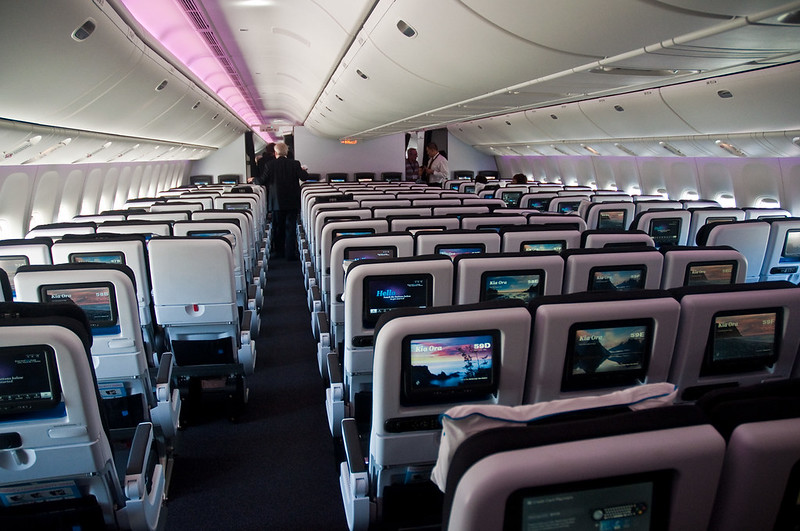
Bulkhead Seats in the Context of Pandemic
Bulkhead seats, which are located in the front row of a cabin, are often considered the most desirable seats on a plane. They offer more legroom and no one reclining into your personal space. However, in the context of pandemic, these seats may come with some drawbacks.
Firstly, bulkhead seats are often located near the lavatories and galleys, which are high-traffic areas. This increases the likelihood of coming into contact with other passengers and crew members, potentially increasing the risk of infection.
Secondly, some airlines have been using bulkhead seats as a location for in-flight medical equipment or as a quarantine area for passengers who may be showing symptoms of illness. This means that passengers seated in bulkhead seats may be more likely to be exposed to sick passengers.
On the other hand, some airlines have implemented additional measures to minimize the risk of infection for passengers seated in bulkhead seats. For example, some airlines have installed curtains or partitions to separate the bulkhead seats from the rest of the cabin.
Overall, while bulkhead seats may still offer some advantages in terms of comfort and legroom, passengers should be aware of the potential drawbacks in the context of pandemic. It is important to follow all recommended health and safety guidelines, such as wearing a mask and practicing good hygiene, regardless of where you are seated on the plane.
Bulkhead Seats and Other Travel Facilities
Bulkhead seats are highly coveted by many travelers due to their additional legroom and proximity to the front of the cabin. These seats are located immediately behind a physical barrier, such as a wall or curtain, and are typically found in the first row of each cabin section.
While bulkhead seats can provide a more comfortable flying experience, it’s important to note that not all bulkhead seats are created equal. Some may have limited recline or no under-seat storage due to the proximity to the cabin wall. It’s recommended that travelers research the specific aircraft and seat configuration before selecting a bulkhead seat.
In addition to bulkhead seats, many airlines offer other travel facilities to enhance the flying experience. JetBlue, for example, offers their Mint service, which includes lie-flat seats, personalized dining options, and access to exclusive lounges.
Hotels also play a significant role in the travel experience, offering amenities such as fitness centers, spas, and on-site restaurants. Some hotels, such as the Ritz-Carlton, even offer private club lounges for elite members.
When it comes to dining options, travelers can find a wide range of choices both in-flight and on the ground. Many airports offer a variety of restaurants and cafes, while some airlines offer gourmet dining options in their premium cabins.
Overall, the travel industry continues to evolve and offer new and innovative ways to enhance the travel experience. By researching and utilizing these facilities, travelers can make their journey more comfortable and enjoyable.
Frequently Asked Questions
Which airlines offer sleeping pods in business class?
Several airlines offer sleeping pods in business class, including Emirates, Qatar Airways, Etihad Airways, Singapore Airlines, and Cathay Pacific.
What are the pros and cons of choosing a bulkhead seat?
One advantage of choosing a bulkhead seat is that it typically has more legroom than other seats. However, bulkhead seats may not have under-seat storage, and passengers may not be able to recline their seats fully.
Do bulkhead seats come with TV screens?
Most airlines provide TV screens for bulkhead seats, but the location and size of the screen may vary depending on the aircraft type.
What is the difference between a bulkhead seat in business class and economy?
In business class, bulkhead seats may have more legroom and additional amenities such as a larger TV screen or a personal storage area. In economy, bulkhead seats may have more legroom but may not have under-seat storage.
Are bulkhead seats better than exit row seats?
Both bulkhead and exit row seats offer additional legroom, but exit row seats may have more restrictions on who can sit in them due to safety regulations. Bulkhead seats may also have more limited recline options.
Do bulkhead seats provide more legroom than other seats?
Yes, bulkhead seats typically have more legroom than other seats due to their location at the front of the cabin. However, some bulkhead seats may have limited recline options or no under-seat storage.



